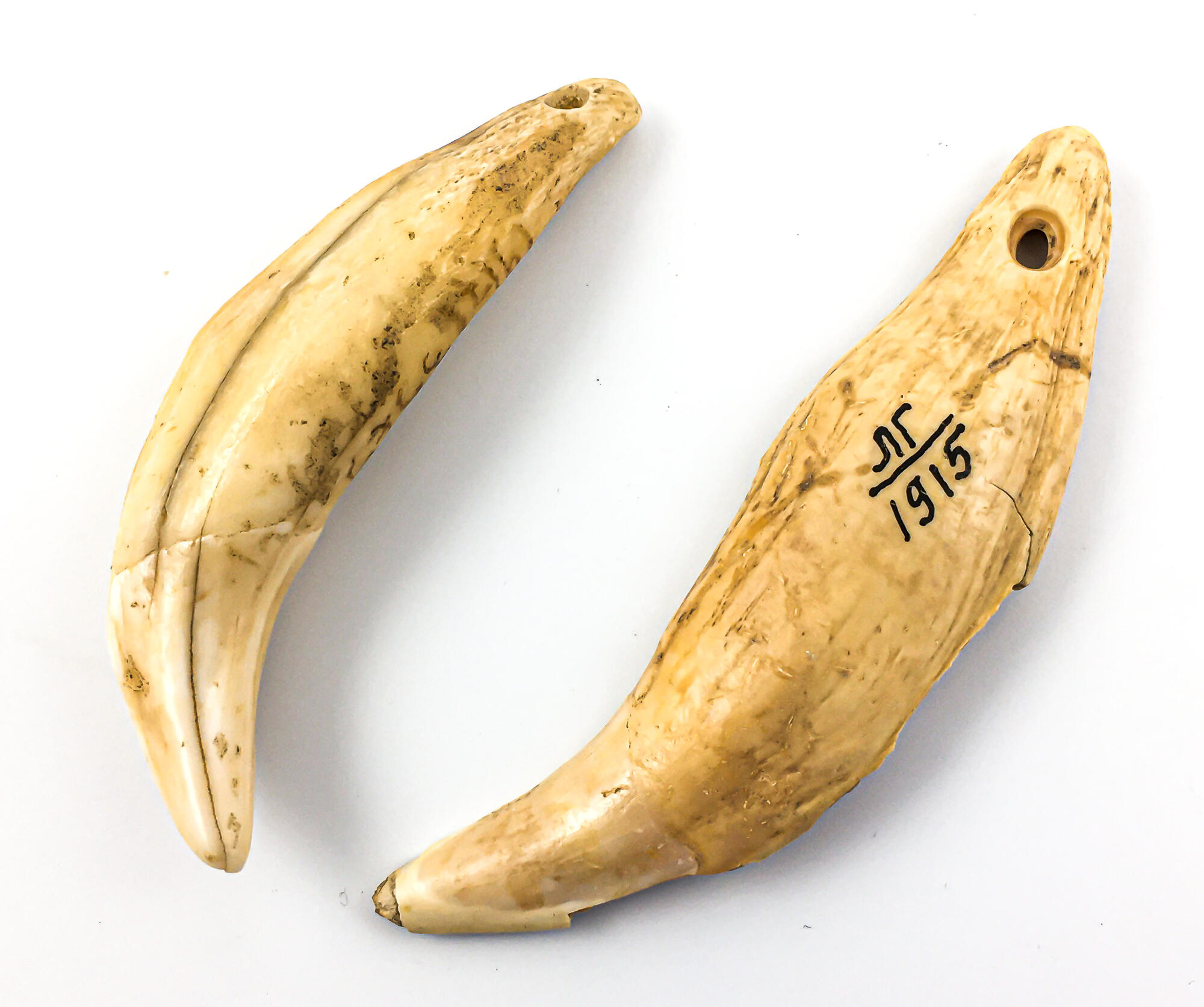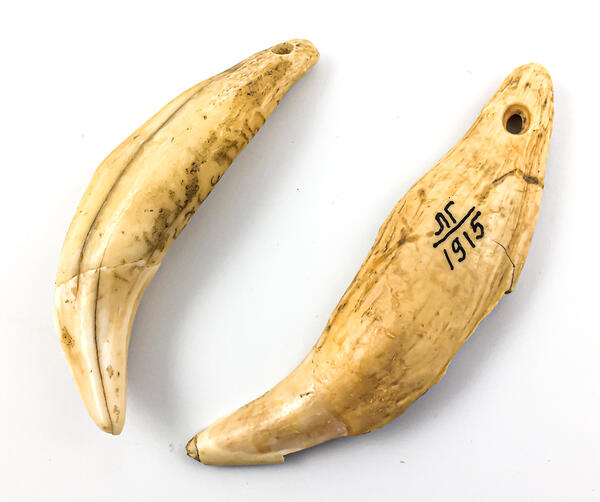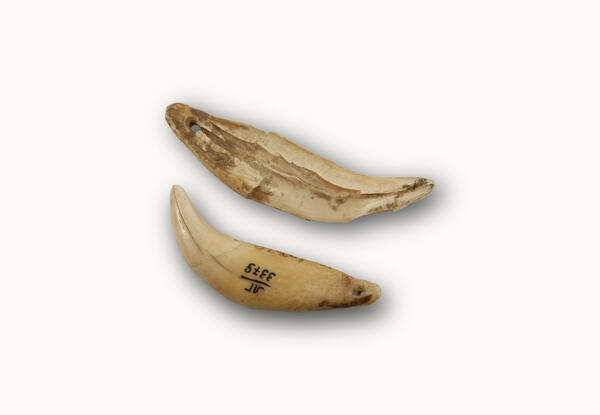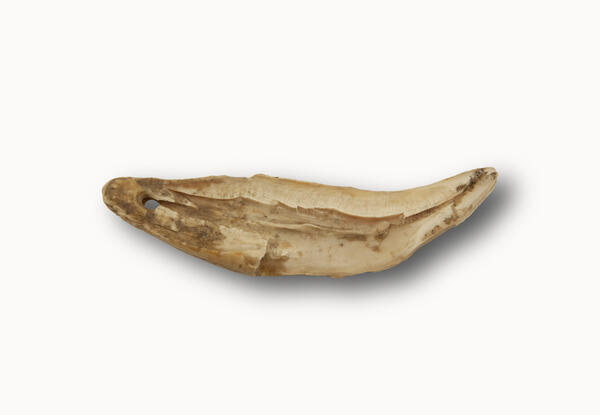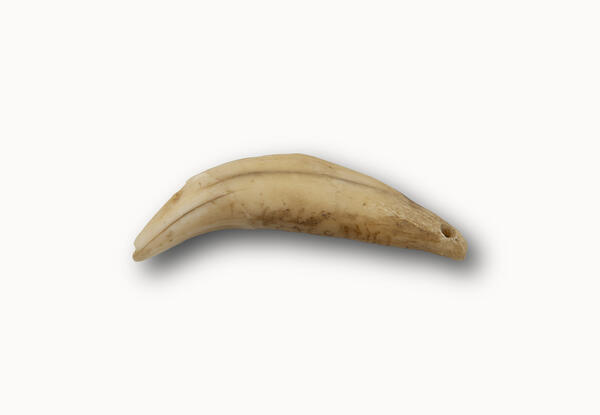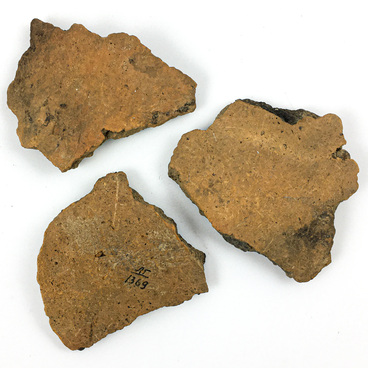Despite the availability of iron, a more advanced material, bone was just as widely used for making various products. There are several reasons for that. The main one was that the development of production required a bigger number and variety of tools, and since iron was just coming into use, its extraction and processing techniques were still flawed.
Cattle breeding and hinting provided cheaper and more common raw materials, such as bone and horn. The most useful were tubular bones of cows, horses, deer, and elks, as well as splint bones, antlers of elks and deer, wild boar tusks, and tubular bones of birds.
The materials of bone and horn have different characteristics in terms of quality. Bone is hard, while horn is softer and more elastic, it is easily cut while raw. Semi-finished products are especially important as they help to shed light on the archaic methods of processing bone and horn. Archaeologists often found such items in ancient settlements.
Fat that is stored in bone tissues for too long causes decomposition. Careful inspection of finished products led scientists to conclude that people mainly used bone parts that had the least amount of fat.
In the process of cooking, bones were degreased to some extent. Researchers believe that the Dyakovo people softened bones by boiling and steaming them in a sealed container, as did the peoples of Northeast Asia in the recent past: the Chukchi, the Koryaks, and the Kamchadals.
They processed bones mainly with a knife and applied primitive stone drills. Grinding was used exclusively for finishing the cutting edge of some tools. Part of the finished products was polished, and judging by ethnographic data, it was done with fur or leather. Top boar tusks were used to make amulets and points for net making.
Russian bone carving encompassed ancient traditions of bone and wood carving of the 6th–10th centuries. Further development and improvement of the craft (in the 16th–17th centuries) gave rise to Russian large bone carving art centers in such places as Arkhangelsk, Kholmogory, and Moscow.
Cattle breeding and hinting provided cheaper and more common raw materials, such as bone and horn. The most useful were tubular bones of cows, horses, deer, and elks, as well as splint bones, antlers of elks and deer, wild boar tusks, and tubular bones of birds.
The materials of bone and horn have different characteristics in terms of quality. Bone is hard, while horn is softer and more elastic, it is easily cut while raw. Semi-finished products are especially important as they help to shed light on the archaic methods of processing bone and horn. Archaeologists often found such items in ancient settlements.
Fat that is stored in bone tissues for too long causes decomposition. Careful inspection of finished products led scientists to conclude that people mainly used bone parts that had the least amount of fat.
In the process of cooking, bones were degreased to some extent. Researchers believe that the Dyakovo people softened bones by boiling and steaming them in a sealed container, as did the peoples of Northeast Asia in the recent past: the Chukchi, the Koryaks, and the Kamchadals.
They processed bones mainly with a knife and applied primitive stone drills. Grinding was used exclusively for finishing the cutting edge of some tools. Part of the finished products was polished, and judging by ethnographic data, it was done with fur or leather. Top boar tusks were used to make amulets and points for net making.
Russian bone carving encompassed ancient traditions of bone and wood carving of the 6th–10th centuries. Further development and improvement of the craft (in the 16th–17th centuries) gave rise to Russian large bone carving art centers in such places as Arkhangelsk, Kholmogory, and Moscow.
